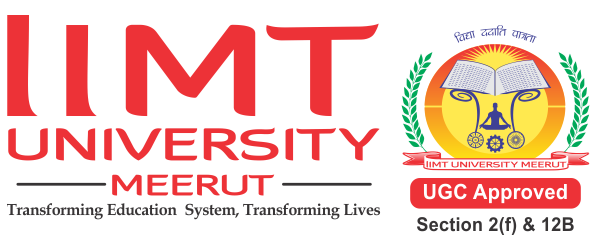The Future of Civil Engineering: Unveiling Emerging Trends and Exciting Predictions
Civil engineering stands at the forefront of innovation and progress. It is poised to tackle the challenges and opportunities of the 21st century. As technology evolves and global trends reshape the world, the future of civil engineering promises to be both dynamic and transformative. Let’s explore some emerging trends and exciting predictions that will shape the future of this vital discipline.
1. Sustainable Infrastructure Development
Prediction: In the future, civil engineering will prioritize sustainability. It will focus on designing and constructing infrastructure that minimizes environmental impact and promotes resilience to climate change.
Trend: Sustainable engineering practices will become increasingly prevalent. These include green building design, renewable energy integration, and eco-friendly transportation solutions. Civil engineers will use advanced materials, innovative construction techniques, and data-driven analysis to create infrastructure that meets societal needs while preserving natural resources.
2. Smart Cities and Urban Planning
Prediction: The rise of smart cities will revolutionize urban planning and infrastructure development. It will usher in an era of interconnectedness, efficiency, and sustainability.
Trend: Civil engineers will play a central role in designing and implementing smart infrastructure systems. These will leverage digital technologies, Internet of Things (IoT) devices, and data analytics to optimize resource utilization, enhance public services, and improve quality of life in urban areas. The cities of the future will be smarter, greener, and more livable.
3. Resilience and Disaster Mitigation
Prediction: With the increasing frequency and severity of natural disasters, civil engineering will focus on enhancing resilience and disaster mitigation strategies. This will protect communities and critical infrastructure.
Trend: Civil engineers will employ innovative techniques, such as resilient design, floodplain management, and coastal protection measures. These will safeguard infrastructure against the impacts of climate change, including sea-level rise, extreme weather events, and flooding. Emphasis will be placed on building robust, adaptive infrastructure that can withstand future challenges and bounce back quickly from disruptions.
4. Digital Twins and Advanced Modeling
Prediction: The adoption of digital twins and advanced modeling techniques will revolutionize the way civil engineering projects are planned, designed, and managed.
Trend: Civil engineers will harness the power of Building Information Modeling (BIM), Geographic Information Systems (GIS), and other digital tools. These will create virtual replicas of infrastructure assets, enabling real-time monitoring, predictive analysis, and informed decision-making throughout the project lifecycle. Digital twins will enhance collaboration, optimize performance, and reduce costs, leading to more efficient and sustainable infrastructure development.
5. Modular Construction and Prefabrication
Prediction: Modular construction and prefabrication will emerge as key strategies to streamline project delivery, improve efficiency, and reduce construction timelines.
Trend: Civil engineers will embrace off-site manufacturing, modular construction techniques, and prefabricated components. This will accelerate project schedules, minimize waste, and enhance quality control. Prefabricated modules will be assembled on-site, allowing for faster construction, lower costs, and increased flexibility in design. This approach will be particularly advantageous for projects in urban areas with limited space and tight schedules.
6. Embrace of Artificial Intelligence and Automation
Prediction: Artificial intelligence (AI) and automation will revolutionize civil engineering. This will enable engineers to automate repetitive tasks, optimize designs, and improve decision-making processes.
Trend: Civil engineers will leverage AI-powered algorithms, machine learning models, and robotic technologies. These will analyze complex data sets, optimize project schedules, and predict performance outcomes with greater accuracy. From automated construction equipment to AI-driven design optimization tools, the integration of AI and automation will streamline workflows, increase productivity, and unlock new possibilities for innovation in civil engineering.
7. Emphasis on Equity, Inclusion, and Social Impact
Prediction: The future of civil engineering will prioritize equity, inclusion, and social impact. This will focus on addressing disparities, promoting diversity, and engaging communities in the planning and design process.
Trend: Civil engineers will adopt a more holistic approach to infrastructure development. They will take into account the social, economic, and cultural factors that shape communities. There will be a greater emphasis on community engagement, stakeholder collaboration, and participatory design processes. This will ensure that infrastructure projects benefit all members of society equitably. Engineers will work closely with underserved communities to address their specific needs and promote social equity through inclusive design practices.
engineers will adopt a more holistic approach to infrastructure development. They will take into account the social, economic, and cultural factors that shape communities. There will be a greater emphasis on community engagement, stakeholder collaboration, and participatory design processes. This will ensure that infrastructure projects benefit all members of society equitably. Engineers will work closely with underserved communities to address their specific needs and promote social equity through inclusive design practices.
In conclusion, the future of civil engineering holds immense promise and potential. It is driven by emerging technologies, shifting societal priorities, and the imperative of sustainability. By embracing innovation, collaboration, and a commitment to excellence, civil engineers will continue to shape the world for the better. They will create resilient, sustainable, and inclusive infrastructure that serves the needs of present and future generations.
To know more – Visit our Website
For admission related queries – Click here or call us @ 9997089170
Authored By:
Mr. Mukesh Pal

